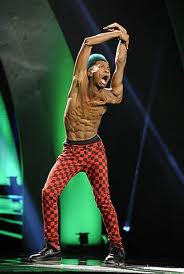The return of Summer’s smash hit TV series So You Think You Can Dance may be in its 10th year here in America, but is back with a fresh new twist.
Throughout its history, the show has had a format of auditioning all types of dancers (literally from every style that one could imagine), then narrowing them down to the top 20 who were fairly well versed in a variety of dance styles. They would be paired into girl/guy couples who would generally compete together until one partner was voted off, when they would then be given a new partner. Most times a lot of the street dancers, who most often lacked technical training, would struggle to pick up the complex choreography from the contemporary and other formal dance styles. Despite this, many of these untrained street dancers such as Twitch Boss, Comfort, Cyrus and Fikshun not only won the hearts of America, and made it farther on the show than judges predicted, but have also gone on to have successful careers in music video, stage and film.
As wonderful as it can be to watch the highly skilled ballet, contemporary and other formally trained dancers twirl and soar through the air, that is exactly what is expected of them after training most of their lives. Whereas there is something even more inspiring about witnessing someone with minimal to no technical training quickly evolve into a well rounded dancer within just a couple of months. Just like watching a caterpillar transform into a butterfly, you will see amateurs grow into consummate professionals and performers right before your eyes.
This year the shows creators decided to mix things up by dividing contestants into two teams right from the start. “Team Stage”, lead by SYTYCD Season 3 finalist all star Travis Wall vs. “Team Street”, lead by all star and Season 4 finalist Twitch. The two have returned to the show during prior seasons as “all stars”, and were paired with new contestants where they competed in guy/girl pairs in every style to win the title. Rather than be divided up into guy/girl teams, this time dancers will individually represent either the street or stage side as they duke it out for their respective style.
Airing weekly on the Fox network, the live competition is just getting underway. Since this years show has more street dancers, representing a wider array of styles than ever, expect to see some dance styles that outside of the show you may not have heard of before. While most people have a general idea of what popular Hip-Hop dancing is, far less are familiar with derivative styles like Turfing, Krump, Animation and Memphis Jookin’.
Along with the debut of rap music in 1970’s New York emerged the Break-dancing B-boys, who provided the visual backdrop for the emerging musical movement. Locking was already a staple danced to funk music like James Brown since the 1960’s. As the social landscape and music began to evolve, so did the dancing. The synthesizer infused 1980’s delivered Popping while the turmoil of the LA riots gave birth to Krump, an aggressive, physically demanding style performed routinely on SYTYCD.
In recent years the show has featured dancers who have introduced street styles like Animating and Turfing larger mainstream audiences. Unlike many of the dance styles which originated in New York or Los Angeles, Turfing developed in Oakland, California in the 1990’s along with the Hyphy music scene led by rapper E-40 E-40. It is credited to dancer Jeriel Bay and is an acronym for Taking Up Room on the Floor. Turfing was promoted as a means for resolving disputes within the community and as such has become central to dance battles everywhere. Turfing is a free flowing dance incorporating storytelling, contortion and Gliding, which lends to its mesmerizing optical illusions. Turfing also features a blend of other eclectic street styles like Flexing, Tutting, Waving and Animation.
Dancers like Cyrus “Glitch” Spencer, Jade “Soul” Zuberi and Dorian “BluPrint” Hector all displayed their Animation expertise as contestants on the show and describe Animation as bending reality, “You want to make the audience question whether what they’re seeing is real,” stated Zuberi. That is exactly how this dance appears, tricking the eyes as if the dancer is using special effects. Animators insist that it is crucial to master the fundamentals of Popping before being able to Animate.
First appearing in the 1980’s Tutting moves form geometric shapes and angles based upon ancient Egyptian hieroglyphics (hence the name).
https://www.youtube.com/watch?v=rQf4YwXxbec
Waving, as the name implies, are a series of movements that make it appear as though a wave or series of waves are traveling up or down a dancers body. Descending from Popping, although not always including Popping basics, Waving requires a tremendous amount of skill and control to master.
Although Flexing is routinely performed to Hip-Hop music and combined with many of these other modern street styles, it originally derives from a Jamaican street dance called Bruk-up, traditionally performed to reggae and dancehall music. Appropriately called Bone Breaking, it is illustrated by rhythmic contortionist movements with gliding, tutting and waving, it is typically performed shirtless so that every movement down to bones popping in and out of place can be displayed.
Gliding also known as Floating or Sliding, create the illusion that there is no friction between the floor and the dancers shoes as the dancer appears to effortlessly glide across the floor backwards, sideways or in a circular motion. Michael Jackson immortalized these movements, particularly the Moonwalk, which he popularized and made into a household name in every corner of the globe.
Another street dance that has seen a recent resurgence in pop culture, as well as on SYTYCD during the audition rounds is Memphis Jookin’. Since its emergence in the early 1980’s, the dance has evolved from a simple 1, 2 step into a rhythmic bounce combined with tiptoe spins, gliding and stalls that have been featured in commercials, videos and campaigns world wide.
With the ever growing popularity and commercial earning power of Hip-Hop culture and music, it is no surprise that it has now become 50 percent of SYTYCD‘s total format, and a dominant force in the arts and media everywhere. As you enjoy watching the aforementioned dance styles on the show, be sure to keep your eyes peeled for the next wave of the future!

